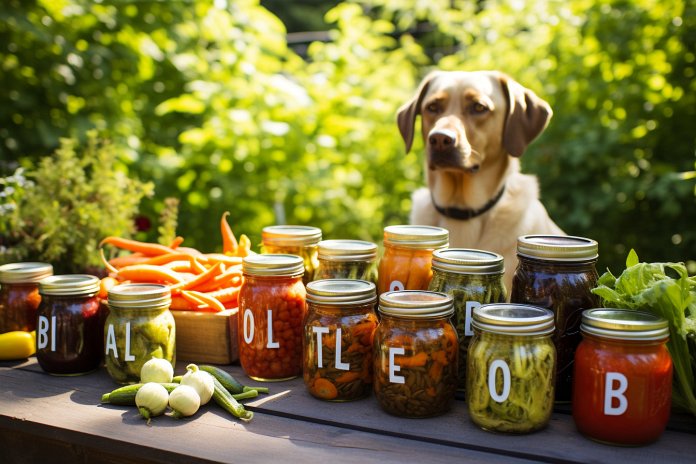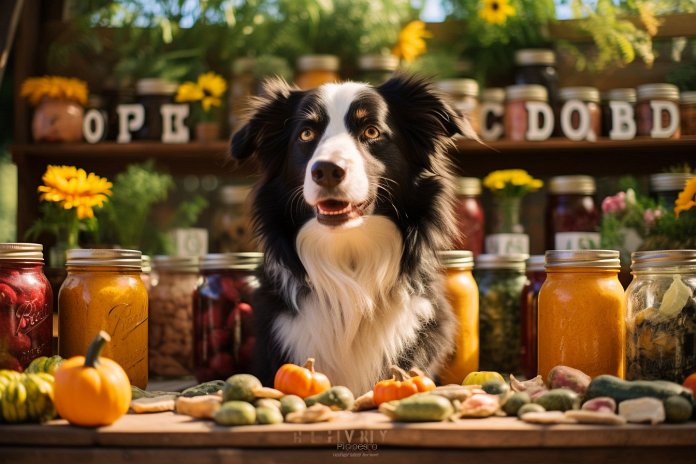
Before you give your dog a pickle or any pickled treat, it’s important to consider the ingredients. While pickles may be tasty for humans, they can potentially harm dogs. The issue lies in the ingredients used to pickle these treats, such as salt, peppers, spices, onions, and garlic, which can be dangerous and even toxic to dogs. These ingredients can cause issues ranging from mild dehydration to serious conditions like hemolytic anemia. It’s best to check the ingredients and avoid giving pickled snacks to your dog altogether.
Signs Your Dog has had too Much Pickled Food
If you suspect your dog has consumed pickled treats, there are several signs to watch out for. Excessive thirst is common due to the high sodium content in pickled products, which causes water absorption in the body. Upset stomachs can also occur, leading to diarrhea, constipation, loose stool, and vomiting. If the pickled product contains garlic or onions, the situation can be more serious, with symptoms like dark urine, vomiting, breathing issues, seizures, loss of consciousness, collapse, and extreme fatigue.
Body Language
There are specific signs to look out for if your dog has consumed too much pickled food. These include being alert, lip licking, drooling, lack of focus, tail tucking, stomach flipping, ears back, and dilated pupils.
Other Signs
Additional signs to watch for include dark or discolored urine, vomiting, diarrhea, hypernatremia (excessive sodium in the blood), excessive urination, excessive thirst, and dehydration.
The History of Pickling
Pickling is a preservation process that dates back to ancient times, with the Mesopotamians using it around 2400 BC. While pickling has been useful for preserving food, it is not a suitable treat for dogs. In severe cases, dogs that consumed pickled foods containing garlic and onions have required blood transfusions to treat their conditions. Haemolytic anemia can occur in dogs that ingest pickled foods with these ingredients.
The Science Behind Pickled Food Hurting Your Dog
While small amounts of pickled food may not cause harm, it depends on the specific ingredients used. The pickled food itself is typically not the issue, but rather the ingredients used in the pickling process. High salt content can lead to dehydration, kidney and organ dysfunction, and digestive discomfort in dogs. Additionally, toxic ingredients like peppers, garlic, and onions can cause haemolytic anemia, which affects red blood cells and causes them to burst.
Training Your Dog to Stay Away from Pickles
Training dogs to avoid specific foods can be challenging, so it’s best to teach them to stay away from all people food. Dogs are attracted to the smell of food, given their highly developed sense of smell. To discourage begging, train your dog not to approach the table while you’re eating. Reward them with a safe treat if they don’t beg, but provide appropriate consequences if they break the rule. For more difficult cases, have your dog wait in their crate during meals to prevent begging habits. Consistency is key, so inform others about your no-begging and no-feeding policy for your dog.
“Keep your pup away from pickles: the ingredients can be harmful and even toxic for dogs.”

Tips & Things to Know
1️⃣ Avoid feeding your dog pickled foods: Pickles and other pickled snacks can be harmful to dogs due to the ingredients used in pickling such as high amounts of salt, spices, peppers, onions, and garlic. These ingredients can be toxic to dogs and can lead to health issues ranging from dehydration to hemolytic anemia.
2️⃣ Signs your dog has ingested pickled food: If your dog has consumed pickled food, look out for signs such as excessive thirst and urination, diarrhea, constipation, vomiting, dark colored urine, and fatigue. It is important to keep an eye on your dog’s body language such as lip licking, drooling, lack of focus, and tail tucking, which could indicate discomfort or distress.
3️⃣ Train your dog to avoid people food: It can be difficult to train dogs to avoid specific foods, so it is recommended to train them to stay away from people food altogether. This can be done by rewarding your dog with a puppy-safe treat if they don’t beg for food at the table, or by teaching them to stay in their crate during meal times. Consistency in training is key to ensuring your dog understands and follows the rules.
Frequently Asked Questions, Answered ✅
1. Why are pickles and other pickled snacks potentially harmful to dogs?
– Pickles and pickled snacks often contain ingredients like salt, peppers, heavy spices, onions, and garlic, which can be dangerous and toxic for dogs.
2. What are the signs that a dog has consumed too much pickled food?
– Signs include excessive thirst, upset stomach (diarrhea, constipation, vomiting), dark colored urine, breathing issues, seizures, loss of consciousness, collapse, extreme fatigue.
3. What are some body language signs that indicate a dog has had too much pickled food?
– Alertness, lip licking, drooling, lack of focus, tail tucking, stomach flip, ears back, dilated pupils.
4. What is the history of pickling and why is it not a good treat for dogs?
– Pickling is a preservation process dating back to ancient Mesopotamia. While useful for preserving food, pickled food can be harmful to dogs, especially if it contains garlic and onions, which can cause serious health issues.
5. What is the science behind pickled food hurting dogs?
– It’s not the pickled food itself that is harmful, but the ingredients used in the pickling process. Salt can cause dehydration and organ dysfunction, while toxic ingredients like peppers, garlic, and onions can lead to hemolytic anemia, where red blood cells burst.